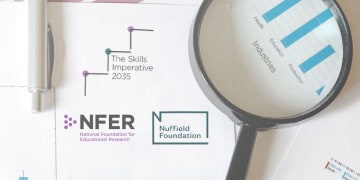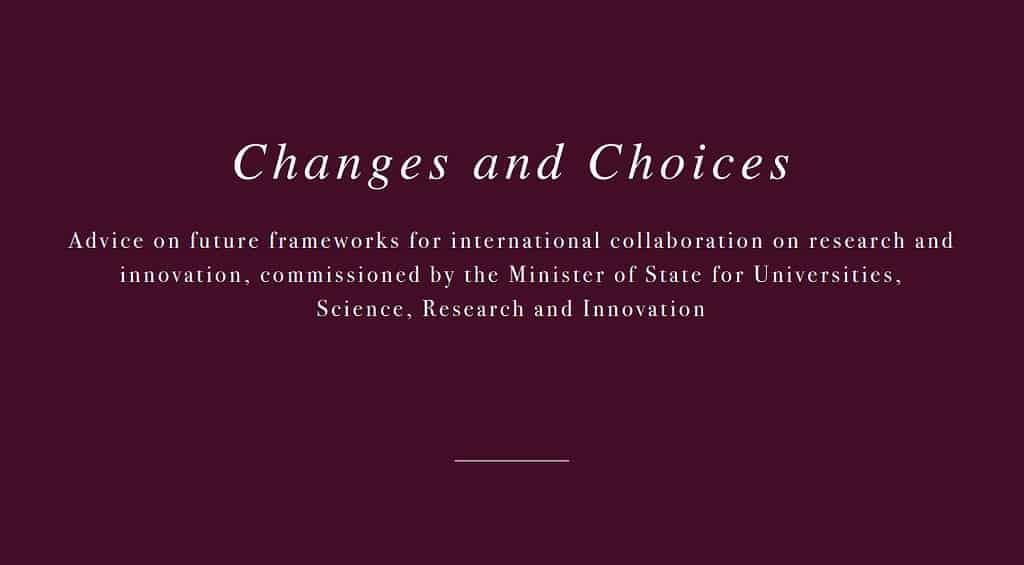Joanna Cox and Ciaran Molloy of the Institution of Engineering and Technology discuss their recent workshop on the Irish border and Brexit
The Brexit and the Irish Border
04 Apr 2018
In the negotiations on leaving the European Union, the impact of Brexit on Northern Ireland and the Irish border remains a thorny issue. At this critical juncture, we believe that the voices of those involved in manufacturing and technology in Northern Ireland must be heard.
On the 21st March the Institution of Engineering and Technology (IET), and its Engineering Policy Group for Northern Ireland, brought together representatives from the engineering, manufacturing, science, and technology communities in Northern Ireland to debate the impact of Brexit on the Irish border at a workshop in Belfast. This event, examined a range of challenges and opportunities that stem from the UK’s withdrawal from the Customs Union and the Single Market.
Background
Since the Good Friday agreement in 1998, the economy across the island of Ireland has grown rapidly, with manufacturing and technology behind much of this prosperity. The GDP of the Republic of Ireland has tripled. In Northern Ireland, manufacturing and technology make up around a third of the overall economy, and advanced manufacturing and engineering in Northern Ireland has grown more rapidly in Northern Ireland than elsewhere in the UK. High tech and renewables are gradually replacing jobs that were lost in heavy industry. Close academic and business links in the region are a vital element of this growth. Nevertheless, in contrast to the Republic of Ireland, the economy in Northern Ireland remains fragile, and shocks to the system such as Brexit are a major economic obstacle, which threaten both peace and prosperity.
The decision of the UK to leave the Single Market and the Customs Union will profoundly affect the Northern Ireland economy. Every business judgement ranging from energy costs through to data transfer will be shaped by policies adopted in the next few months and the issue of the border is still the object of considerable political controversy. The Joint Report of 8 December 2017, which allowed talks to proceed to the next stage, contained suggested solutions for resolving border arrangements, which are not mutually compatible. Currently, much of the text in the draft withdrawal agreement which relates to the protocols surrounding the Ireland/Northern Ireland arrangements is still to be agreed. While these issues continue to be debated by a specialist committee of the UK and the EU 27, the question needs to be resolved by October 2018 at the latest.
The Northern Ireland border is 310 miles long with over 200 formal crossing points and probably the same number again of informal crossing points. The recent report of the Northern Ireland Affairs Committee “The land border between Northern Ireland and Ireland” documents the long standing “porous” nature of the border, the large numbers who cross it on a daily basis, and the dominance of small businesses and agriculture in cross border trading. It also notes that the border “has unique political significance due to the history of Ireland”.
The UK insists that the Irish border issue can be solved by a “deep and comprehensive” free-trade deal with a customs agreement bolted on, and if that proves impossible, “frictionless” trade may be achieved using technological solutions. This was reiterated by Teresa May in her letter to Donald Tusk, just prior to the publication of the draft withdrawal agreement. If this is not possible, the suggested “backstop” from the EU was that Northern Ireland should effectively remain in the Customs Union, a position which is unacceptable to the DUP which maintains the Conservative Government in power at Westminster. None of this will be easy to resolve.
Need to tackle uncertainity
At the Brexit and the Irish Border workshop, a central theme which emerged was the unease which the present uncertainty is generating in Northern Ireland. The majority of people within Northern Ireland voted to remain in the EU (56%), and there is a tangible feeling that Brexit is something that is happening to them, rather than a democratic process that they are engaged with. Divisions over Brexit often re-inforce sectarian divides, stifling consensual politics and debate.
The uncertainty is distracting businesses from forward planning and growth. Around 80% of cross border trade is with small and medium sized enterprises. There is currently no definitive guidance on future customs procedures, any additional administration required, or the costs which these may entail. The loss of immigrant labour in the agri-processing sector, supply chain disruption and future energy costs if there is disruption to the current all-island electricity market in Ireland were among other concerns raised.
Participants at the event who were academics expressed concern at the possible consequences on academic funding in relation to programmes such as Horizon 2020, exchange programmes such as Erasmus and the overall prospects for collaboration in the new environment. Aspirations to deepen co-operation between academic institutions north and south through bodies such as Universities Ireland were noted but it was also pointed out that the drop in value in sterling since the EU referendum left academics in the North at a disadvantage compared to those south of the border. The general issue of higher import costs caused by currency depreciation was another recurrent theme.
Divergence of standards and the consequences to business which might arise from changes in future VAT regimes were also mentioned. Within the border region itself, it was noted that this was an area which had lower productivity than the Northern Ireland average (which itself is the lowest in the UK).
While the lack of clarity in many areas surrounding Brexit undoubtedly contributed to rather a negative overall outlook, the engineering manufacturing, science and technology community understand that change, and their ability to adapt, will always be a factor in business. They are keen to seize any opportunities that may arise. The capacity for Northern Ireland to be a “bridge rather than a border” was stressed. Many companies are already establishing geographically close offices in both the Republic and Northern Ireland, which will allow them easy access to both the UK and EU markets. The possibility of free trade zones for NI originated goods was discussed, alongside building new trading relationships.
No definite predictions can be made at this point as to the future nature of the border itself. The current debate centres on exemptions, technology and alignment, although none of these options (other than a very full interpretation of alignment) will avoid a return to a “hard” border. Much will depend on the future trading arrangements between the UK and the EU, in particular the degree of future divergence which may emerge and how this may be controlled. While technology such as vehicle recognition systems or trusted trader schemes (e.g. Authorised Economic Operators or Approved Exporters), has a role in facilitating the future economic partnership, it cannot provide all the solutions. In the final analysis, it is probably not possible to have both a hard Brexit and a soft border.
Further information can be found on the IET website by following this link.
Related articles

The Physiological Society’s policy team on the health challenges facing older workers and the urgent need to develop a strategy to ensure older people are happy and healthy at work.

Jo Reynolds, Director of Science and Communities at the Royal Society of Chemistry, on the RSC’s new summary report looking to unlock the potential of deep tech SMEs.

Lisa Morrison Coulthard, Research Director at the National Foundation for Education Research, on the Nuffield Foundation funded five year research programme providing insights into the essential employment skills needed for the future workforce

Sir Adrian Smith, Institute Director and Chief Executive of The Alan Turing Institute, and Graeme Reid, Professor of Science and Research Policy at UCL, set out the findings from their new independent report on international partnership opportunities for UK research and innovation